History of Japanese Soaking Tubs
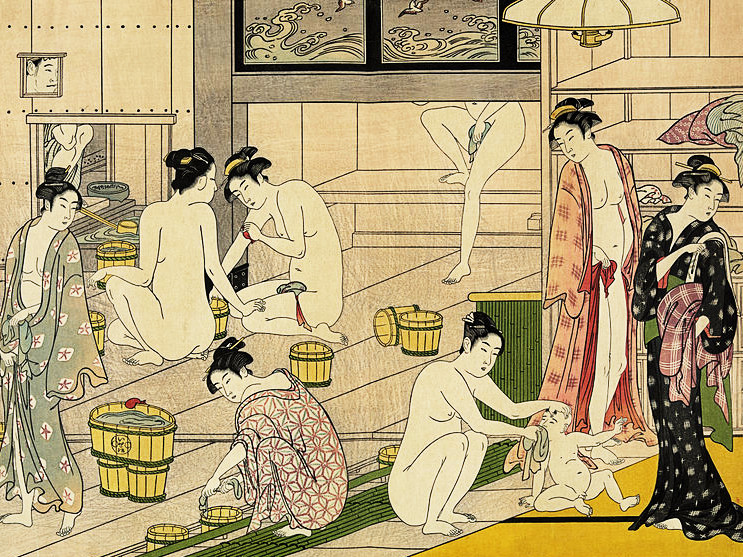
Japan Bathhouse, Library of Congress (Public Domain)
Japanese are obsessed with cleanliness. This obsession holds true for things, places, etc. but especially for oneself. The Japanese sense of cleanliness is influenced by Buddhism and from Japan's own ancient religion of Shinto.
Shinto gods hate filth. Ritual Purification customs can be seen at Shinto shrines, such as washing your hands before entering a shrine. In Shintoism, "Kami" (A god or Spirit) exists in everybody and everything and that one needs to keep things and oneself clean all the time. Furthermore, the arrival of Buddhism to Japan in 552 AD reinforced this "cleanliness" attitude and popularize Onsen (Natural Hot Spring bathing) even more because in Buddhism, bathing to keep pure and clean is in keeping with the religion's principles. By immersing one's body in the "divine waters" of a Hot Spring, the bather is cleansed of the sins of the flesh, and the good will of the Gods is conferred upon him or her.

Kagoshima City with Sakurajima Volcano in Background, Kimon Berlin (CC BY-SA 2.0)
Japan is blessed and cursed with volcanic activity. Depending on the study, Japan usually ranks #2 or #3 in the world for the most volcanos in a country. Once every few hundred or few thousand years these volcanoes reek havoc among the nearby residents but on the other hand, this volcanic/thermal activity gives the entire country a massive amount of Natural Hot Springs. Most non-Japanese have no idea that Japan is the #1 country in the world for Natural Hot Spring baths, hotels and resorts. From the Northern Island of Hokkaido, all the way down to the Southern Island of Kyushu, Japan is packed with over 2,300 officially recognized Hot Springs (In accordance with a Japanese 1948 Hot Spring Law defining what a Hot Spring actually means). As a matter of fact, the 2nd, 3rd and 4th oldest companies in the world are Hot Spring Hotels in Japan. One Hot Spring, Dogo Onsen, claims to have been used for over 3,000 years. This tells just how serious the Japanese take their bathing!
Think about it, the 2nd, 3rd and 4th oldest companies in the world are Japanese Hot Spring Hotels... just goes to show how important soaking in hot water is to the human body! Oh, by the way, the oldest company in the world was a Japanese construction company that most likely built Hot Spring Hotels [Ref. Wikipedia: List of oldest companies].
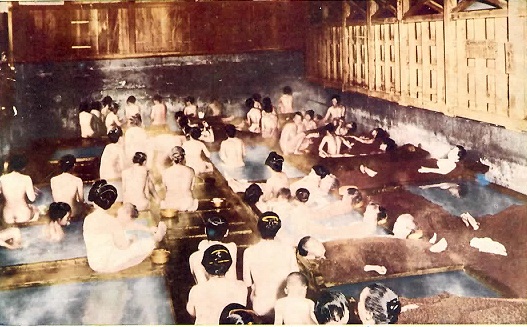
Late 1800s (Public Domain)
Although soaking in an open air Natural Hot Springs was a great thing to do, sometimes these places were far from where people lived and many of the better Natural Hot Spring places had been bought (or controlled) by investors and warlords to build Japanese Inns or keep them private. To make bathing more accessible to the average person, local Bath Houses were built during the Edo Era (1603-1868) and Hot Spring water was either piped in or wells were drilled to bring the natural water to the surface. This era also brought in the "Sue Furo" a private type of bath in ones home in which bathers could submerge up to ones the shoulders and heated by fires burning under that pot.
In 1709, Goto Konzan, a Tokyo doctor at that time, noticed how spring bathing helped cure certain medical disorders. Soon afterwards he initiated the first medical study of hot springs and after World War 2 over 50 national hot spring hospitals have been established. Today this technique is used in the treatment of chronic diseases such as rheumatism and hypertension.
During the Showa Era (1926-1989), more buildings with internal baths were built, and home baths became the new norm. During the period of rapid economic growth from 1960 to the mid-1990s the bath became a more and more important part of the Japanese home, if not the most important aspect. The "Ofuro" (bath) is the quiet place to soak away the stresses of modern life.
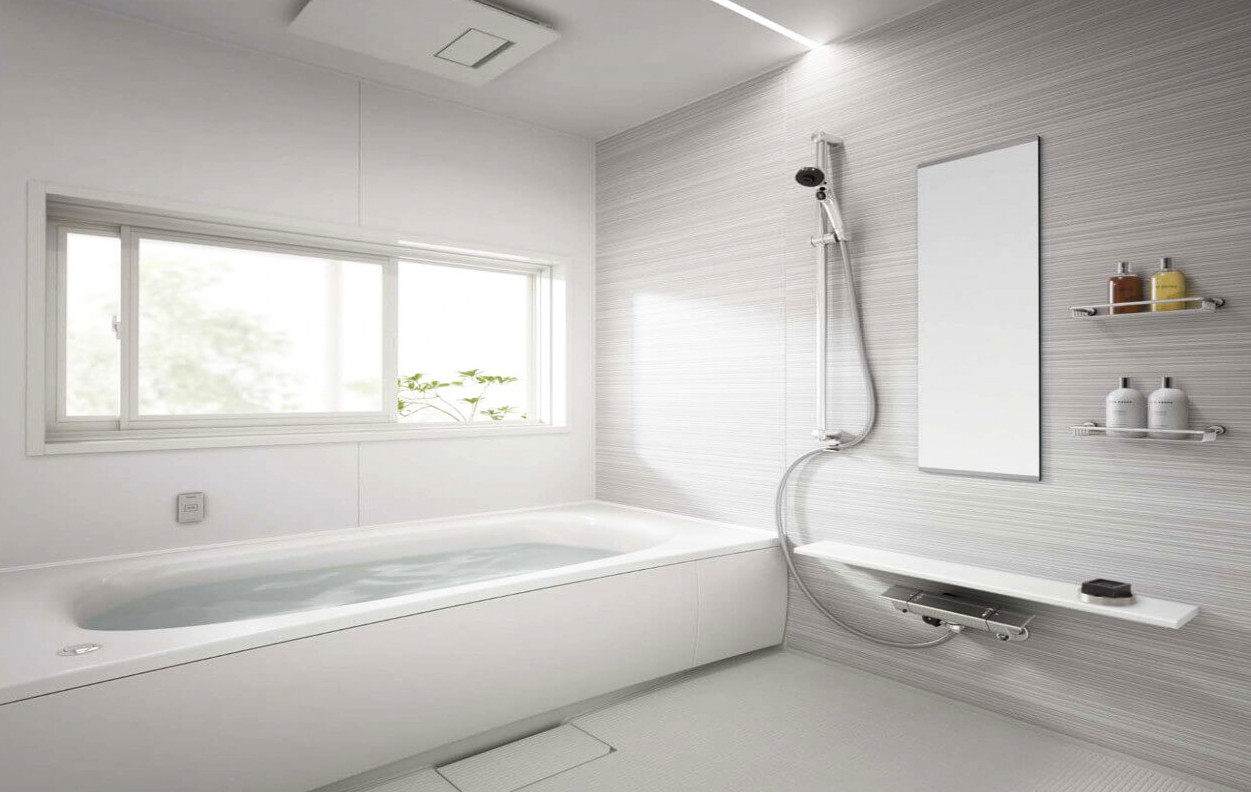
Japanese Unit Bath
In 1964 the "Unit Bath" (or System Bath) was introduced to Japan because the Hotel New Otani had to hurry and build 1,044 rooms for the 1964 Tokyo Olympics. The "Unit Bath" revolutionized the housing market as these baths could be installed quickly, are very easy to clean and had everything a person needed in one nice little unit. The Japan Housing Corporation adopted the "Unit Bath" as the system bath for tens of thousands of apartments it had planned for the country in the 1960s and from that point on, the "Unit Bath" became the de-facto bathing system for houses, apartments and accommodations.
These days when you say "bathroom" to a Japanese person the thing they will imagine is a "Unit Bath". The Ofuro (bathtub) in these "Unit Bath" systems is a deep tub that we call the "Japanese Soaking Tub".
Bathing Culture and Mindset
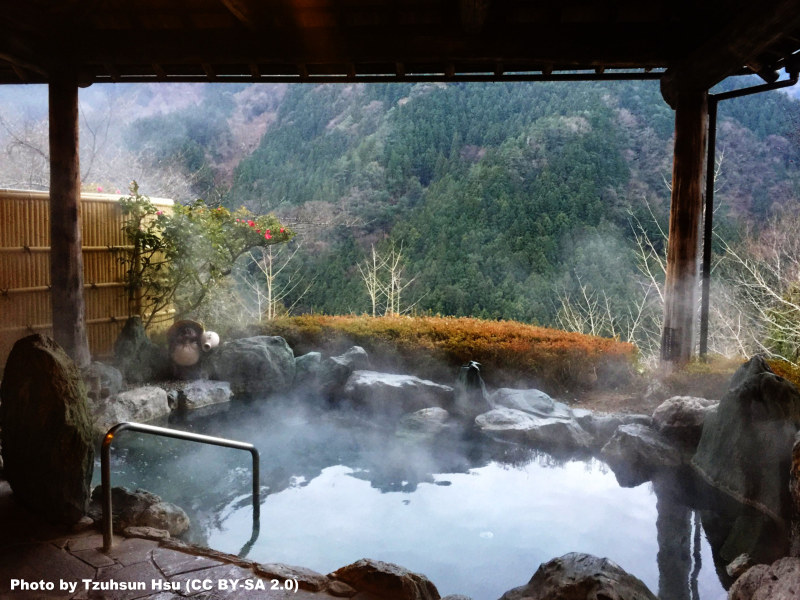
Onsen, Tzuhsun Hsu (CC BY-SA 2.0)
The Japanese find nothing suggestive, debauched or offensive about bathing naked with each other in a public bath. However, to the foreign observer the thought of sharing a public bath naked with complete strangers can feel wired, strange and even shocking. Christian influenced views of nudity and its relation with sex are at odds with the Japanese take on being naked together. When the first Christian missionaries arrived in Japan around 1549 as well as Commodore Perry in 1853, they were absolutely shocked to learn that Japanese would public bath almost every day! OMG! I'm sure some even came close to having a heart attack when they learned that... men and women would bathe naked together! Mixed bathing with men and women sharing the same bath was considered completely natural at the time and the Japanese could not understand why foreigners were so adamantly against it.
Note however that in the early 1950s, female Japanese parliamentarians, strengthened by post-war reforms and liberalization pressured the new government to pass laws making it compulsory for public baths to separate male and female baths. Today, 95% of all Hot Springs are segregated but if you have the desire and search, there are still some mixed gender baths around the country.
Interesting Footnote
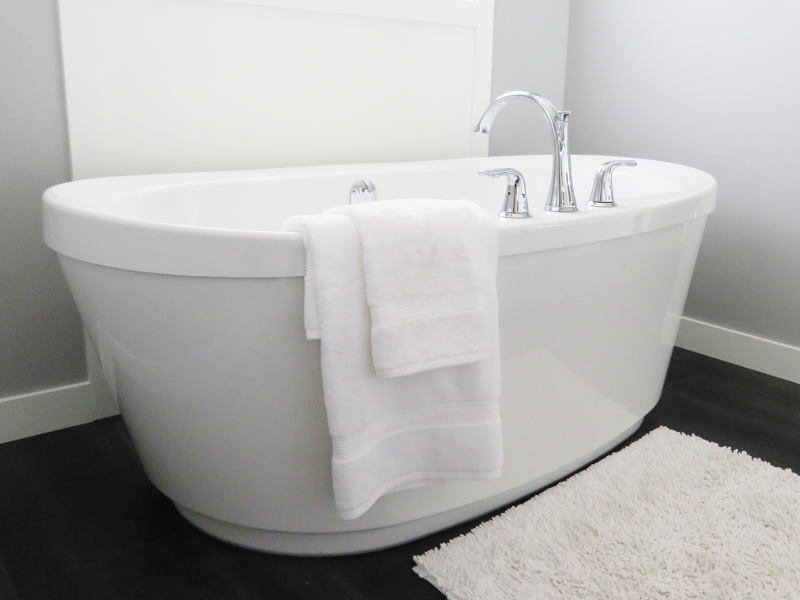
American made / American Style "Japanese Soaking Tub"
It may come as a surprise to learn that the term (or phrase) "Japanese Soaking Bath" or "Japanese Soaking Tub" is not a real Japanese term that the Japanese use. The term (or phrase) "Japanese Soaking Bath" was made up by an American manufacturer to appeal to American and European buyers. In Japan the term they use is just plain 'ol, "bath" ("Ofuro" in Japanese). A normal Japanese bath is deep and people do soak in them but this is just a normal type tub for the Japanese which they just call a "bath".